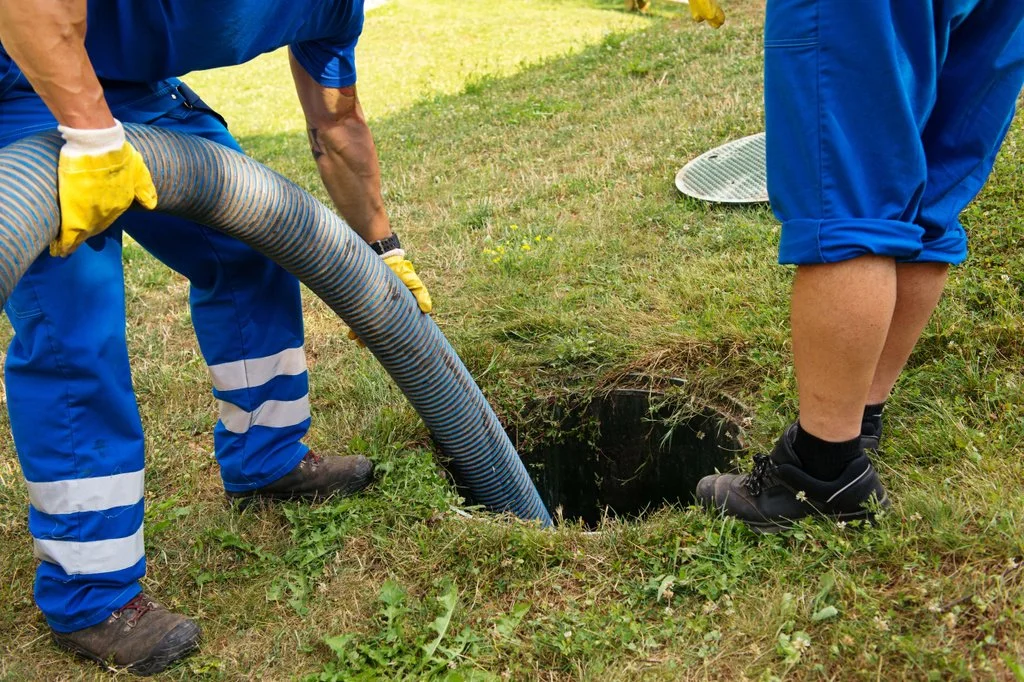WASTEWATER
TREATMENT
Wastewater treatment is a critical but often overlooked aspect of home infrastructure. For homes not connected to municipal sewer systems, proper onsite wastewater management is essential for both environmental protection and public health.
WHAT TYPE OF ONSITE WASTEWATER SYSTEM IS RIGHT FOR ME?
Conventional Septic System
Many areas and homes do not have access to a municipal sewer system, and in these cases a form of onsite wastewater treatment is needed to treat household waste. Roughly 50% of households in North Carolina use a septic system to treat household waste [1], and this number is closer to 80% in coastal areas [3]. Septic systems are a low maintenance, safe, and effective waste treatment option. Simply put, in a conventional septic system, household waste flows into a septic tank and from there to a drain field with trenches (Figure 1)[2]. The drain field materials (such as gravel) and surrounding soil filter the effluent, treating it as it drains [2]. Typically, land is also needed for a ‘repair area’ - an area designated for future system needs, such as expansion or repair, in the future ([5]).
The lifespan of a conventional septic system will vary, but a well constructed and properly maintained system may last several decades or more [4]. If your system is 25-30 years or older, it is recommended to begin planning for an upgrade [4]. Septic systems should be regularly inspected (every 1-3 years [4]) to ensure the system is functioning properly and the tank will need to be occasionally pumped out to remove solids (every 3-5 years, though frequency will vary, and can be ascertained during an inspection). Do not assume that simply because the water flows down the drains in your house that there are no issues, and do not wait for issues to appear before scheduling an inspection or performing maintenance. By this time, your system may be too compromised and the only solution may be costly repairs or replacements (costs may range from $5,000 to $15,000 to repair or replace a conventional septic system [4]). To schedule an inspection of your septic system, contact Carteret County Environmental Health Services.
Mound Septic System
The design of a mound septic system is similar to a conventional septic system except the drain field is installed in a manmade sand mound. In this system, effluent from the septic tank is pumped to the drain field, where it is filtered through the sand mound before entering the soil. Like a conventional system, this type of system requires periodic maintenance and can last a long time. However, it is costlier to install and requires more area for constructing the mounded drainfield.
Sand Filter System
In a sand filter system, effluent is pumped from the septic tank into a concrete box filled with sand material. As the effluent drains through the box, it is treated, and the treated wastewater is then discharged into the drainfield. Because a Sand Filter System can be installed above or below ground, it is a good solution for sites that may have drainage problems, but it is more expensive than a conventional septic system.
Source: US EPA
Conventional Septic System Alternatives
Constructed Wetland System
In this steam, effluent from a septic tank flows into a wetland cell, which is typically lined with an impermeable liner, filled with sand and gravel, and planted with wetland plants that can handle permanently saturated environments.
Aerobic Treatment Unit
This type of unit replicates the processes that occur at a municipal wastewater treatment plant, but on a much smaller scale. This system does not require a large footprint and can be used to treat waste from homes on very small lots, however, it is more expensive and requires lifetime maintenance.
WHAT TO DO IF YOUR SYSTEM HAS BEEN FLOODED?
If your system has been flooded, you should contact the local health department to have it inspected as soon as it is safe to do so to ensure that it is functioning properly. The North Carolina Department of Health and Human Services recommends that anyone with a septic system in a flood-prone area keep their system properly maintained and ensure that all inspection access openings are completely sealed to prevent any water from seeping into the septic system. If your system has a backwater valve, ensure it is operating properly before a flood event; if it is not, you may need maintenance on your system.
In addition to regular inspections and maintenance, there are several steps homeowners can take to reduce the sensitivity of their septic system to flooding, including chronic higher water tables. One is to install a septic tank riser, which prevents floodwaters from being able to enter the system. Another is to raise the elevation of the system, such as by building a mounded drainage system or installing the tank above the water table.
The local health department’s environmental services branch will be able to assist with information, inspections, and issuing permits for onsite wastewater system installation and major repairs. Additionally, if you’re unsure what type of system your home uses, or where it is located, contact Carteret County Environmental Health Services.
Carteret County Environmental Health Director
252-728-8499
EHcustomerservice@carteretcountync.gov
3820 Bridges Street, Suite A, Morehead City, NC 28557
(open M-F, 8am to 5pm)
Resources and Funding for Onsite Wastewater System Maintenance and Repairs
-
Description: Loans may be used to install a new, or make repairs to an existing, well or septic system
Eligibility: The person applying for a loan must own and occupy the property, the property must be located in a rural area, and the maximum income can not exceed $87,000.
Find out more: Contact SERCAP’s Loan Fund by email at loanfund@sercap.org or by phone at 540-345-1184.


